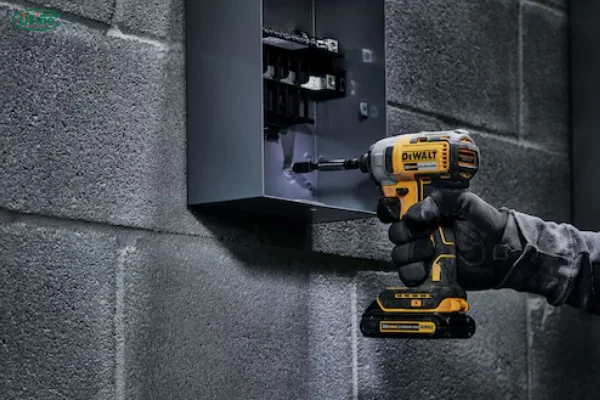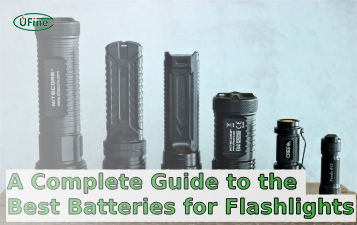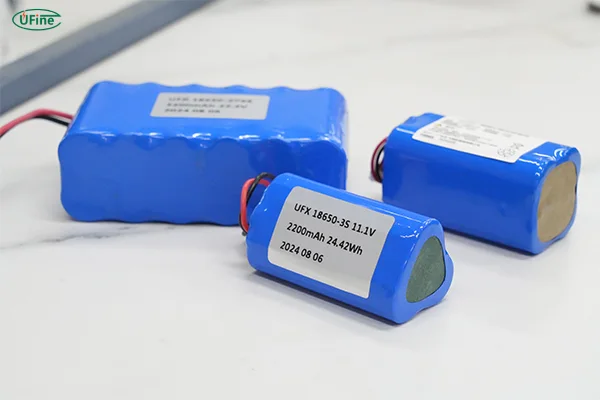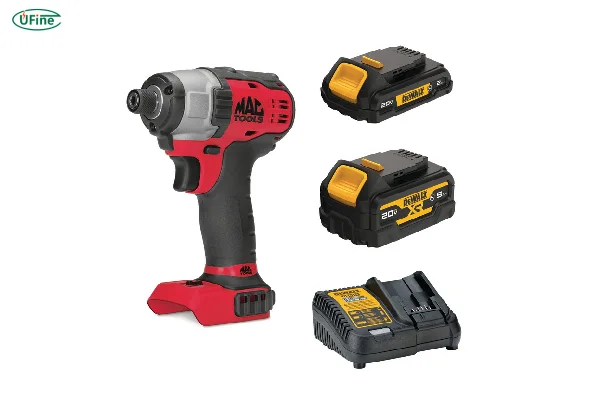
- Part 1. Why your impact driver battery matters so much
- Part 2. Impact driver battery types
- Part 3. Understanding impact driver battery size
- Part 4. Voltage differences: 12V, 18V, and 20V
- Part 5. Top impact driver battery brands to know
- Part 6. How to extend the life of your impact driver battery?
- Part 7. 7 Signs your impact driver battery needs replacement
- Part 8. How to replace the impact driver battery
- Part 9. Choosing the right battery and charger
- Part 10. FAQs
A great impact driver is only as good as the battery powering it. It’s not just a plug-in power pack—it’s the heartbeat of your tool. If you want consistent power, long run-time, and top-tier performance, you need to understand your battery.
In this guide, we’re going deep into everything you need to know—from battery types and sizes to maintenance tips and replacement advice. Let’s unlock the full potential of your impact driver, together.
Part 1. Why your impact driver battery matters so much

An impact driver’s performance depends heavily on its battery. That’s not an exaggeration—it’s a fact. The battery affects:
- Torque delivery
- Speed
- Run-time
- Responsiveness
- Tool longevity
Without a reliable battery, even a premium impact driver becomes sluggish. You might notice inconsistent power, overheating, or just frequent downtime from having to recharge. On the other hand, a powerful and efficient battery gives you confidence, control, and freedom.
That’s why investing in the right impact driver battery is not a luxury—it’s a necessity.
Part 2. Impact driver battery types
There are primarily two battery types you’ll encounter:
Nickel-Cadmium (Ni-Cd)
- Older technology.
- Less expensive.
- Prone to memory effect—loses charge if not fully drained before recharging.
- Heavier and bulkier.
- Lower energy density.
Lithium-Ion (Li-ion)
- The gold standard today.
- No memory effect.
- Lighter and more compact.
- Higher energy output.
- More efficient charge cycles.
- Slightly more expensive, but absolutely worth it.
Li-ion impact driver batteries dominate for good reason. Their consistent performance and lightweight design make them ideal for both professionals and hobbyists.
Need custom lithium-ion battery solutions? Ufine Battery is a trusted Chinese manufacturer specializing in custom Li-ion, LiFePO4, cylindrical, and high-performance batteries. Whether you’re building power tools or need replacements, We offers tailored solutions that deliver durability and power. Contact us directly to get started with a battery that truly powers your performance.
Part 3. Understanding impact driver battery size
Battery size is more than just physical dimensions—it’s about capacity.
Measured in amp-hours (Ah), battery capacity tells you how long a battery can power your tool. Here’s a rough guide:
- 1.5Ah–2.0Ah: Lightweight and good for quick tasks.
- 3.0Ah–4.0Ah: Balanced option for most home or mid-level pro use.
- 5.0Ah+: Heavy-duty work, long sessions, or outdoor tasks.
Larger batteries generally last longer, but they can also add weight. Choose a size that matches your workload. If you’re tired of running out of juice mid-task, it might be time to upgrade.
Pro tip: Ufine Battery can customize battery sizes based on voltage, capacity, and physical constraints—perfect for tool brands or DIYers building their own tools.
Part 4. Voltage differences: 12V, 18V, and 20V
Voltage determines the raw power output of your impact driver battery.
- 12V Batteries: Great for compact tools and lighter tasks.
- 18V or 20V Batteries: Most common; strong enough for nearly all applications.
- 36V+ Batteries: Reserved for industrial or extremely heavy-duty tasks.
Here’s the thing: 20V Max and 18V often refer to the same battery (20V is the max charge, 18V is nominal). Marketing plays a role here, but what matters most is matching your battery voltage with your tool’s requirement.
Part 5. Top impact driver battery brands to know
If you’re shopping for batteries, here are five brands you can trust:
DeWalt
- Famous for their 20V Max system.
- Long-lasting, quick charging.
Milwaukee
- Their M18 and M12 lines are incredibly efficient.
- Smart battery management systems included.
Makita
- Known for compact batteries with solid output.
- Great balance between power and portability.
Bosch
- Robust construction, excellent heat management.
- Popular in both DIY and pro markets.
Ryobi
- Budget-friendly.
- Good for casual users and DIYers.
These are solid choices, but sometimes off-the-shelf batteries don’t fit your custom tool needs. If you’re building or modifying tools, consider partnering with Ufine Battery to create high-performance lithium batteries tailored to your specs.
Part 6. How to extend the life of your impact driver battery?
A good battery is an investment. Take care of it, and it will take care of your work. Here’s how:
- Charge correctly: Avoid overcharging or fully draining.
- Avoid heat: Store batteries in cool, dry places.
- Clean the contacts: Dust and grime reduce efficiency.
- Use it often: Batteries degrade faster when left idle.
- Invest in smart chargers: These prevent overheating and trickle charging.
Part 7. 7 Signs your impact driver battery needs replacement
How do you know it’s time for a new battery? Look out for:
- Your tool loses power quickly.
- Battery takes forever to charge.
- It overheats frequently.
- Physical swelling or leaking.
- Charger doesn’t recognize it.
- It won’t hold a full charge anymore.
- Tool performance has noticeably dropped.
Don’t wait until you’re mid-project to act. A weak battery will only hold you back.
Part 8. How to replace the impact driver battery
Replacing is easy if you follow a few steps:
- Turn off and unplug your impact driver.
- Press the battery release button and remove the old unit.
- Insert the new impact driver battery—listen for the click.
- Fully charge before first use for best performance.
Make sure the new battery is brand-compatible and voltage-matched. Or go custom with Ufine Battery if you’re upgrading or designing a tool system from scratch.
Part 9. Choosing the right battery and charger
Here’s what to keep in mind:
- Match the voltage: 18V tools need 18V batteries.
- Capacity vs. weight: Higher Ah = more time, but more bulk.
- Fast vs. slow charging: Fast is convenient, but may reduce battery life.
- Brand compatibility: Stick to the same system when possible.
- Check reviews: Real-world performance matters.
Part 10. FAQs
Can I use a 20V battery in an 18V tool?
No—unless the system is cross-compatible. Always follow the tool’s requirements.
What’s the difference between OEM and third-party batteries?
OEM batteries offer guaranteed fit and performance. But custom batteries from manufacturers like Ufine can match or even exceed OEM specs at better value.
Why does my battery die so quickly?
It might be old, damaged, or stored incorrectly. Heat and overuse also shorten lifespan.
Can I use a fast charger with any battery?
Not always. Use the charger recommended by the brand—or a smart charger with built-in controls.
Is it safe to buy batteries online?
Yes, if from a trusted source. For peace of mind, consider working with Ufine Battery for certified, custom-built lithium solutions.
Related Tags:
More Articles

A Complete Guide to the Best Batteries for Flashlights
Discover the best batteries for flashlights: alkaline, lithium, NiMH & rechargeable options. Tips for performance and maintenance.
Graphene Battery vs Lithium Battery: Which is Better?
Compare graphene battery vs lithium battery in energy density, charging speed, lifespan, cost, and EV applications. Learn which battery leads in 2025.
What is the Difference Between MCA and CCA on Batteries?
Learn the difference between MCA and CCA batteries. Understand what MCA means, what CCA is, and how to choose the right battery for vehicles or marine engines.
Type of Lithium Battery Voltage
Learn lithium ion battery voltage, nominal voltage, and voltage range. Compare Li-ion, LiPo, LiFePO4, and 18650 voltages, charging, and device compatibility.
Gel Battery vs Lead Acid: A Detailed Comparison
Compare gel and lead-acid batteries: lifespan, cost, charging, DoD, safety, and key use cases. Find the right battery for solar, marine, EV, UPS, and daily use.




